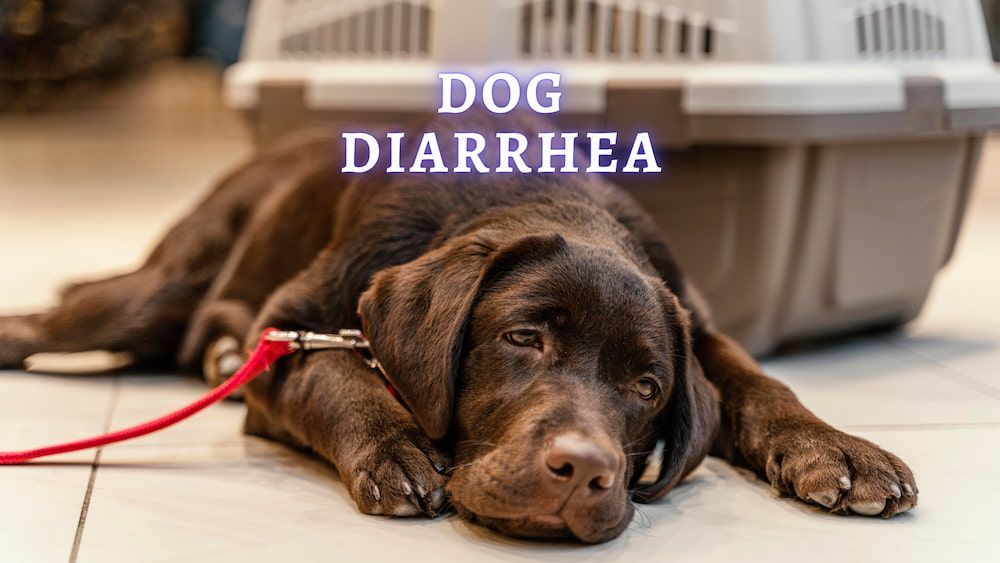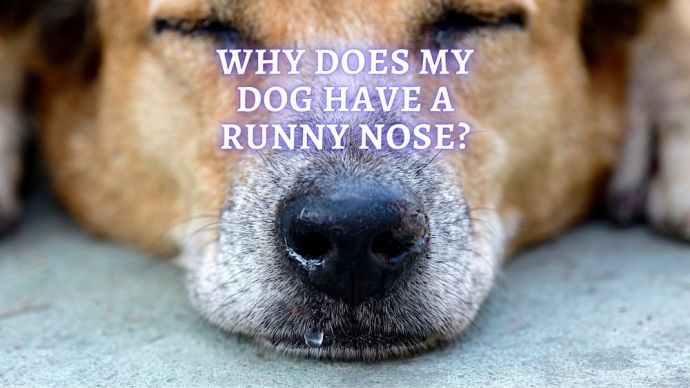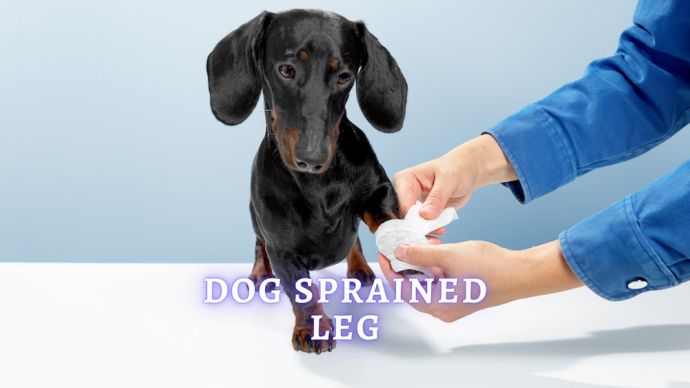Diarrhea in Dogs: Why My Dog Has Diarrhea and How To Stop It?
Written by:
Author: Vicki Smirnova
Vicki Smirnova is a professional writer and editor who adores animals and helps readers get along well with their pets. She has been working in digital media for more than 5 years and has great experience writing content about lifestyle, including pets. Vicki specializes in dog health and nutrition, cat feeding, dog training. She is an aquarium lover and is passionate to write about fish care at home. Also, Vicki headed several websites and worked as a news editor.
View all 244 articlesLearn about our editorial process and veterinary review board.
Reviewed by:
Veterinary review
by Dr. Linda Simon
Dr. Linda Simon is a veterinary surgeon working with seven years of experience. She is a fellow of the British Veterinary Association and specializing in animal medicine. Also, she has been the Woman magazine resident vet for the past two years and writes a regular column for them, focusing on pets and their health.
View all 30 articlesLearn about our veterinary review board
Viewed: 93
Updated on: 03/07/2023
Diarrhea in dogs is a pathological condition in which stools of an irregular consistency (liquid / semi-liquid / unformed) are observed, and the frequency of defecation may be disturbed. The stool may contain mucus, droplets of fat (steatorrhea), and other inclusions. Diarrhea is a symptom of many diseases and disorders in dogs, primarily of the gastrointestinal tract.
Types of Dog Diarrhea
Dog diarrhea can be acute or chronic. We can also distinguish between small and large-intestine watery diarrhea, which is essential in the initial diagnosis.
Acute dog diarrhea is characterized by an abrupt, sudden onset of symptoms and usually lasts 1-3 days. The causes of acute diarrhea include toxicity, gut obstructions, infectious diseases, etc.
Chronic diarrhea is the soft and frequent stool present for over three weeks. [1]
Why do Dogs Get Diarrhea?
To find out why a dog may have watery diarrhea, it is necessary to understand the mechanisms that lead to softening of the stool and an increase in the frequency of defecation.
From the point of view of physiology, there are four main mechanisms for the development of dog diarrhea:
- osmosis;
- hypersecretion;
- increased permeability of mucous membranes;
- violation of intestinal motility.
Usually, several mechanisms are involved at once. Most often, diarrhea in dogs is associated with osmotic causes and increased permeability of the mucous membranes. Several osmotically active solutions in the intestinal lumen determine the water content of the feces. Osmotic dog’s diarrhea occurs when nutrients are not digested and absorbed correctly but remain in the intestinal lumen and attract water through osmosis. Osmotic diarrhea can also occur due to overfeeding, sudden changes in diet, and consumption of spoiled foods containing poorly absorbed nutrients. An increase in the permeability of the mucous membranes and, as a result, the development of inflammation and erosion of the intestinal walls occurs most often due to parasitic diseases. Impaired intestinal motility usually occurs secondarily due to prolonged inflammation of the intestine. The exception is swallowed foreign bodies (toys, chewed bones, sticks, chips, etc.), which are a common cause of diarrhea in dogs, and in some cases, without timely surgical intervention, can lead to the development of necrosis, peritonitis, and death.
Chronic diarrhea can cause parasitic diseases, infectious pathologies, cancers in the gastrointestinal tract, dog food intolerance, and an unbalanced diet. Establishing a diagnosis, in this case, is only sometimes straightforward and can involve several tests and patience from the pet owners. Diarrhea in a dog can result from various causes that require diametrically different approaches to effective treatment.
Some causes of chronic diarrhea are sinister, and ongoing diarrhea can lead to weight loss and dehydration, so getting to the root cause is very important.
Dr. Linda Simon
RELATED: My Dog Has Diarrhea, But Acting Fine
Causes of Diarrhea
Feed change or Bland Diet
Any abrupt change in dog food or introduction of a new ingredient can provoke a dog’s diarrhea. As a rule, in such a situation, the pet’s general condition will remain without significant changes. The condition will not deteriorate strongly, and the appetite will be preserved or moderately reduced. In most cases, offering a bland diet of chicken and rice alongside water will allow the stomach to settle. While fasting is sometimes appropriate for puppies and toy breeds of dogs, fasting should be no more than 4-6 hours due to the risk of a drop in blood sugar (hypoglycemia). It is necessary to exclude from the dog’s regular food the product that provoked soft stools in the dog. If we are talking about changing the feed or type of diet, it should always be carried out gradually, over 7-10 days, mixing the new feed with the usual one and progressively increasing its proportion. Return to the standard dietary management, let the stool normalize, and introduce new specially formulated dog foods in stages.
Poisoning and foreign bodies
It is essential to find out precisely what the dog ate. This will inform you and your doctor if it is dangerous and the consequences. If there is a suspicion of eating garbage or toxic substances or that the dog has swallowed a foreign object (bags, pieces of toys, washcloths, bones, balls, jewelry, sticks), you should seek help from a veterinary clinic. Often, the vet will induce vomiting as long as the pet is seen in time. The vet may also start IV fluids and activated charcoal to minimize toxicity. For some toxic substances, the doctor can administer an antidote (antidote), and some poisonings will be treated symptomatically. Imaging, such as x-rays and ultrasounds, will be needed to diagnose foreign objects. If the thing is not visible on the x-ray, a contrast agent will help identify the foreign object. In some cases, endoscopy may be required, mainly if the thing is small and does not appear on an x-ray.
Intestinal parasites
Diarrhea in a dog can be associated with helminths (worms) or Protzoa. As a rule, these are chronic conditions. Diarrhea may appear intermittently, and sometimes blood and mucus may appear in the stool. Along the way, the dog may gain weight poorly and have flatulence and moderate bloating. Infection with intestinal parasites can occur orally – most often by eating raw meat, soil, or other animals’ feces. Puppies can become infected in utero by their mother.
All animals should be treated for intestinal parasites regularly. The frequency of treatments depends on a few factors (whether he goes outside or what animals he contacts) and the dog’s diet (specifically the presence of raw meat). We generally de-worm adult dogs every 3-6 months, with puppies needing more regular treatment. This is worth discussing with your veterinarian. If helminths or protozoa are suspected, the dog will need to have stool tests done. In some cases, it is not possible to identify parasites the first time. It helps to analyze a ”pooled sample”, meaning a selection of 3 stools passed over a few days, as parasites are not shed in each stool.
Viral and bacterial infections
Diarrhea is caused by several viral and bacterial infections that cause inflammation of the gastrointestinal tract. The most famous and very common infectious disease in puppies is Parvovirus enteritis. This infection is especially dangerous for puppies under the age of one year. The younger the puppies, the higher the mortality rate for this disease. The best protection against Parvovirus enteritis is timely vaccination with a quality vaccine following the recommended schedule. Coronavirus enteritis is another consideration. Dogs often deal with this virus when there are no co-existing infections. However, dogs may become co-infected with other viral or bacterial infections, complicating matters.
Of the bacterial infections of the intestine, diseases caused by Escherichia coli, Salmonella, Campylobacter, and Clostridia are the most common. These can be detected on a stool analysis.
Intestinal infections, in addition to diarrhea, will usually be accompanied by the following symptoms:
- An increase in body temperature.
- Deterioration of general condition, weakness.
- Decrease or lack of appetite, refusal of water.
- Vomiting.
- The presence of blood and mucus in the feces.
- Pain in the abdomen.
- Weight loss and dehydration.
If any of these signs are present, you should contact the nearest emergency animal hospital as soon as possible to help your pet promptly. There are quick tests (patient-side” snap tests” that quickly help clarify the diagnosis) for diagnosing some viral infections and diseases.
The first of the tasks in treating intestinal infections is the fight against dehydration. Patients may require intervention, including intravenous fluids and oral fluids. Since many fluids and salts are lost with diarrhea and vomiting, they must be replaced. Additional treatment will depend on the cause and severity of the pet’spet’s condition and may include e.g., antibiotics and probiotics.
Consequences of intestinal diseases
Diarrhea can also be the result of a range of intestinal diseases, including:
- Inflammation of the stomach – gastritis
- Inflammation of the duodenum – duodenitis
- Inflammation of the intestines in general – enteritis
- Inflammation of the large intestine – colitis
- Diseases of the liver and gallbladder – hepatitis, hepatosis, cholecystitis, cholangitis
- Inflammation of the pancreas – pancreatitis
This is not the whole list. The causes and nature of these diseases are diverse – inflammatory processes, changes in the structure and function of organs, various types of digestion disorders and absorption of nutrients, hereditary diseases, hormonal diseases, and other conditions can all be at play. Diarrhea is a very non-specific sign.
Gastroenterology is one of the most extensive branches of canine veterinary medicine. To establish a diagnosis, understand the causes of diarrhea, and treat the pet, a veterinarian may need to run several tests in cooperation with the dog owners. A range of tests, including imaging, stool analysis, and blood tests, may be employed to establish a diagnosis. In more complex cases, we may also need to perform intestinal laparotomies, endoscopies, and gut biopsies.
In case of acute diarrhea, it is recommended to consult the nearest emergency animal hospital. They will conduct an initial examination and provide symptomatic care. When signs persist or worsen, tests may be advised.
For more complex cases of chronic diarrhea that are not responding to treatment, it may be worth being referred to a specialist for a more thorough workup.
READ MORE: How Long Can a Dog Go Without Pooping
How to Treat Diarrhea in Dogs at Home?
If the dog has one-time diarrhea, there are no additional symptoms (abdominal pain, fever, vomiting, and so on), and you suspect that she has overeaten or eaten something from the table – at home, you can offer a bland diet and keep a close eye. If there is no recurrence of diarrhea and the dog remains active with a good appetite – no additional treatment is required. Dont use human medications.
In some cases, it can be worth offering a probiotic anti-diarrhea paste. We should also ensure our pet is up to date with a broad-acting wormer. Encourage water drinking and consider also offering a canine rehydration solution.
Dr. Linda Simon
When To Visit a Vet?
The appearance of a single liquid or semi-liquid stool is not something terrible and critical, especially if the dog has previously eaten something that differs from specially formulated dog foods. In such a case, a little diarrhea can act as a protective cleansing mechanism in the body and is considered beneficial. But there are situations when you really need to go to the vet as soon as possible.
Treat diarrhea will vary greatly depending on the cause of the diarrhea. It is important to understand that in some cases, diarrhea can be a symptom of a life-threatening condition, such as with hemorrhagic gastroenteritis, viral diseases (carnivorous distemper, parvovirus enteritis, especially in puppies), or a swallowed foreign body. So, we should never become too complacent.
Acute profuse diarrhea (very frequent urge to defecate, very loose stools, almost water) can by itself, regardless of the cause, quickly lead to severe dehydration requiring clinical care. If the dog has additional symptoms, especially vomiting, lethargy or a fever, it is necessary to quickly seek vet’svet’s advice. Dont use human medications! [2]
Additional signs that are red flags include:
- poor health of the animal (lethargy, apathy, decreased activity), against the background of loose stools;
- with an increase in the body temperature of the dog (you can determine by dryness of the nose, as well as increased breathing and heart rate). Owners are also able to assess body temperature using a rectal thermometer;
- with very frequent diarrhea;
- with the appearance of pain in the abdomen (you can determine by feeling the dog). A dog may stretch out and they may have a tense or stiff abdomen.
- with the addition of vomiting;
- if the stool changes color, especially green, white, yellow, black, red;
- when there is an unusual fetid odor of feces;
- if a lot of mucus, blood or other impurities are excreted in the stool.
Among the most dangerous diseases that an infection can cause is Parvovirus enteritis. This disease is potentially fatal, especially in young pups. The virus can be picked up by ingesting infected feces, especially when a pup is kept in unhygienic conditions. The virus is quickly absorbed and begins to adversely affect the intestinal lining. The dog begins vomiting and passing diarrhea, which may contain blood. The best way to protect your dog from it is to get vaccinated. Before old enough for vaccines, a dog should have some protection from the antibodies passed by their mother’smother’s milk.
RELATED: Why My Dog Poops So Much?
How to stop Diarrhea in Dogs?
The first steps to take if your dog has diarrhea are:
- Try to find out the cause, and determine the external factors that could affect its occurrence.
- Offering a bland and digestible diet and stopping any treats or chews.
- Provide access to water and rehydration solutions.
- Adjustment of nutrition, if necessary (remove new foods, feed habitual food).
- Starting probiotics.
If diarrhea persists for more than a day, or other symptoms appear, you should contact a veterinary clinic for further advice.
People also ask:
What do you give a dog to stop mild diarrhea?
We can trial a bland diet alongside a rehydration solution. It can also help to offer a probiotics, anti diarrhea paste. Owners should ensure their dog is up to date with a broad acting wormer such as Fenbendazole. More complicated or prolonged cases of diarrhea would require vet attention.
How long is too long for a dog to have diarrhea?
When diarrhea is starting to cause signs such as dehydration or is accompanied by other signs, we need to start to pay attention to it. In a physically well dog, a day or two of diarrhea is not necessarily caused for concern. Once diarrhea has been present for 3 weeks or longer, it is classed as diarrhea.
Why is my dog pooping liquid poop?
The cause of chronic diarrhea can be parasitic diseases, infectious pathologies, IBD, food intolerance, endocrine disorders, an unbalanced diet etc. This is not a specific sign, and many potential causes must be considered.
Article Sources:
- “Chronic Diarrhea.” WSAVA 2001 , vin.com/VINDBPub/SearchPB/Proceedings/PR05000/PR00127.htm.
- “Diarrhea in Pets.” The Pet Wiki, 22 May 2012, thepetwiki.com/wiki/diarrhea_in_pets/.
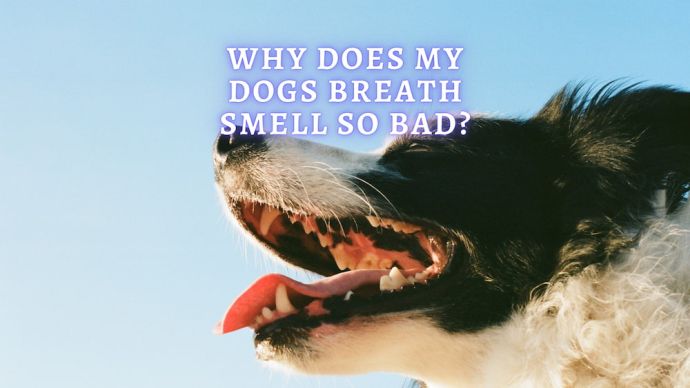 Dog Care Dog Bad Breath: Why Does My Dog’s Breath Smell So Bad? (Vet-Approved Advice)
Dog Care Dog Bad Breath: Why Does My Dog’s Breath Smell So Bad? (Vet-Approved Advice) - 79
- 0
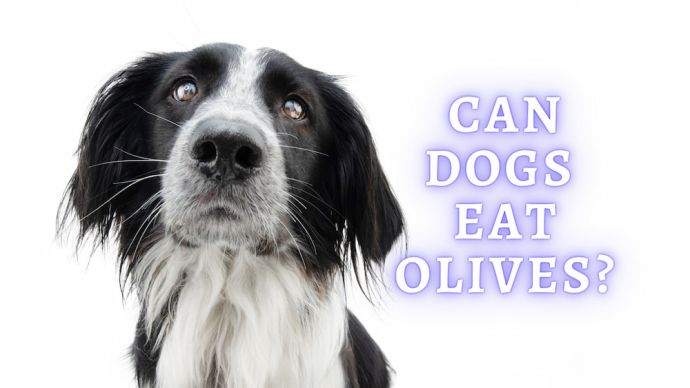 Dog Care Can Dogs Eat Olives? Benefits and Dangers of Feeding Olives to Your Dog
Dog Care Can Dogs Eat Olives? Benefits and Dangers of Feeding Olives to Your Dog - 167
- 0
 Dog Veterinary Tips Why is my Dog throwing up: Causes and Preventing (Veterinary Advice)
Dog Veterinary Tips Why is my Dog throwing up: Causes and Preventing (Veterinary Advice) - 23424
- 5
 Dog Care Why Is My Dog Bleeding From Its Butt? Causes and treatment of rectal bleeding in the dog
Dog Care Why Is My Dog Bleeding From Its Butt? Causes and treatment of rectal bleeding in the dog - 22076
- 0
 Dog Care My Dog Keeps Scratching His Mouth: Reasons Why Your Dog Scratching Face
Dog Care My Dog Keeps Scratching His Mouth: Reasons Why Your Dog Scratching Face - 17561
- 1









